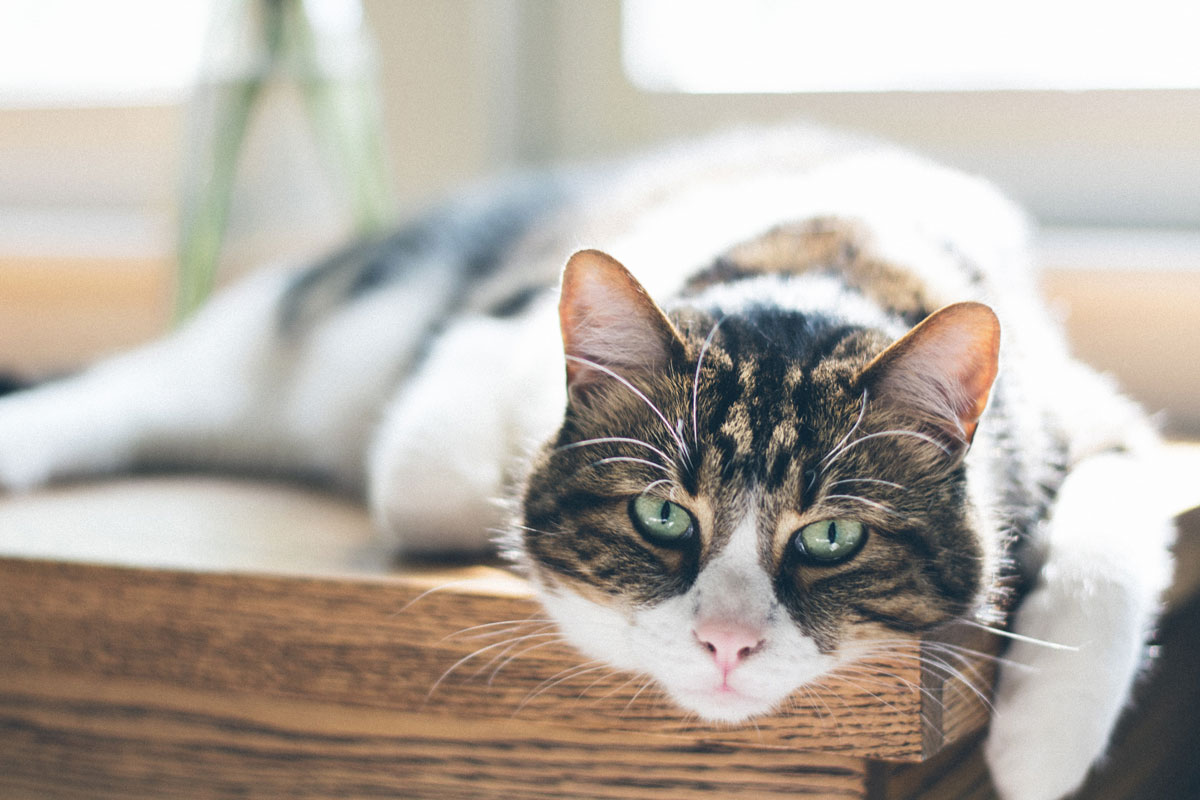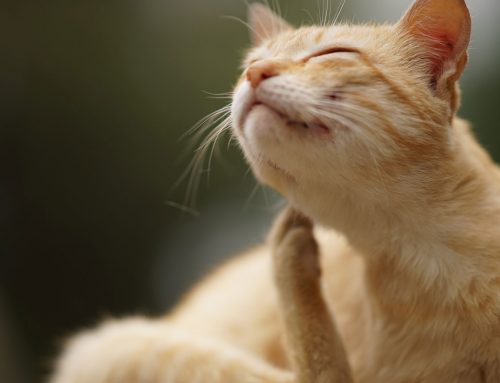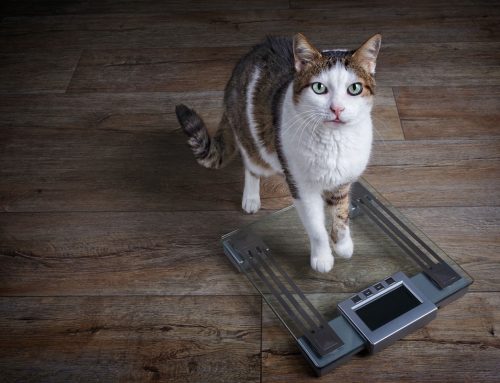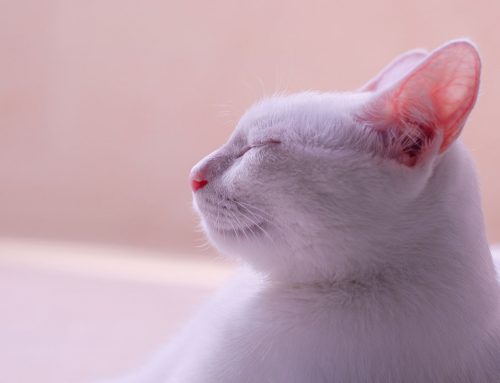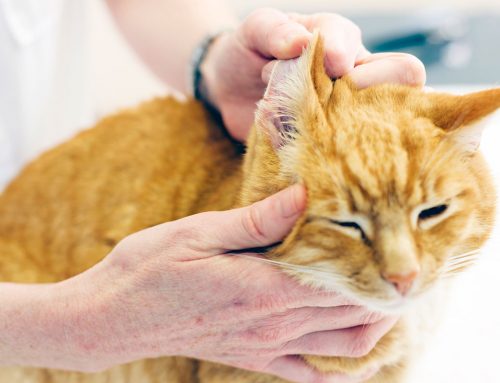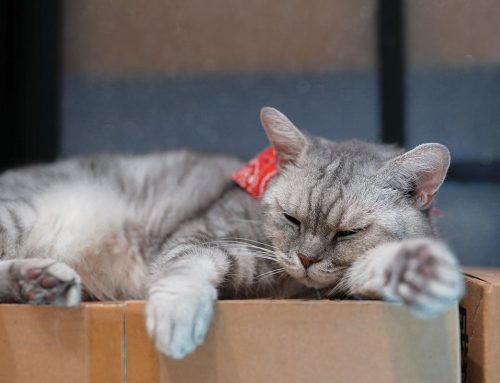Getting a diabetes diagnosis from your veterinarian can be scary, but fortunately, your cat can live a long fulfilling life with just a few tweaks to your daily routine. If you’re facing the rest of your cat’s life with diabetes, this guide will help put your mind at rest and show you that living with a diabetic cat may not be as complicated as it seems at first.
Why Do Cats Get Diabetes?
Feline diabetes, as in humans, affects the production of insulin, the hormone that moves glucose around the body through the bloodstream to the cells. Feline diabetes is similar to type-2 diabetes where the body is capable of making insulin but it is not transported correctly through the body, so glucose builds up within the bloodstream. This causes symptoms such as increased thirst and urination, and if left untreated, can become life-threatening.
It is still not known exactly what causes feline diabetes, but it is more common in older cats and is more likely to affect cats that are overweight as this further decreases the cat’s sensitivity to the body’s natural insulin.
Diabetes and Cat Food: Overview
Cats, in general, are not good at breaking down carbohydrates and this is even more true for diabetic cats. It is therefore important that the diet of a diabetic cat is low in carbohydrates, low in fat, and high in protein.
Bearing this in mind, you should avoid dry cat foods completely as they are packed full of starch, giving them a high concentration of carbohydrates which will drive your cat’s blood sugar up and cause some serious problems. Instead, stick to wet foods as a majority that you can buy are high in protein and low in carbohydrates anyway, and cat food designed for diabetic cats will be even better.
Feline diabetes can affect individual cats in different ways; some will lose weight and some will gain weight as a result of their condition. If your cat is overweight, you should help them gradually lose the extra weight with a special diet as this often makes their diabetes easier to manage, and it may even allow the body to become more responsive to naturally produced insulin, essentially reversing the effects of diabetes in the first place. While it may not be possible for your cat to return to a normal diet – especially if mass-produced kibble is involved – you may be able to relax the rules after some time and contact with your vet.
What Ingredients Should I Look for in Diabetic Cat Food?
All cats need to have animal-based protein as part of their diet, but especially those with feline diabetes. Your cat food should provide more protein than fat as high levels can just add unwanted calories, unless your vet advises you otherwise because your cat is underweight. Look for cat foods that contain around 50% of the calories from protein and 40% calories from the fat content.
If you can afford it, look for brands of cat food that include whole chicken or other sources of protein on the ingredients list in a high percentage, as this will provide your cat with the best possible nutrition.
What Ingredients Should I Avoid?
As mentioned briefly above, it is really important to avoid carbohydrate-rich cat foods as these will cause sudden and high increases in blood glucose levels which will lead to problems without immediate counteraction from insulin. This means that, as well as dry foods that cannot be made without high carbohydrate content, you should stay away from any foods that contain gravy or sauces as these are also often high in carbohydrates.
A little carbohydrate is unavoidable, but your cat’s food should avoid ingredients that are largely carbohydrate in content.
What Nutritional Information Should I Look at on Cat Food?
Calories
Since the blood sugar of an overweight cat is harder to control, it is vital that you look carefully at the calorie content of cat food. Many cat foods are high in calories which will cause your cat to further put on weight or make it harder for your cat to lose or maintain weight. Measuring out portions and regularly weighing your cat can help them to lose weight slowly and safely.
Carbohydrates
Although the optimal amount of carbohydrates for feline diabetes is still unknown, food that fits into a lower carbohydrate diet is most beneficial to cats with diabetes. However, you should be aware that if your cat has other health issues, such as kidney disease, a low carbohydrate diet may not be the best option for your cat, so make sure you seek advice from your vet if your cat has additional issues.
Carbohydrate levels are often not specifically mentioned on the nutritional information on cat food, and if this is the case you should be able to work it out yourself. Add together the percentages for protein, fat, fiber, moisture, and ash (ignore all others), and subtract that number from 100 to get the percentage of carbohydrate.
Fiber
Dietary fiber is a helpful nutrient for diabetic cats as it can help to level out glucose levels in the blood. Not only is fiber low in sugars but it also leaves a cat feeling fuller with fewer calories, and it causes food to be more slowly digested for a gradual release of any sugars. Fiber is essentially carbohydrate that cannot be digested, so fiber can drive up the carbohydrate content up if their cat food, but it should largely be fiber if so.
Protein
Protein, sourced from animal products, is essential for all cats as they are not able to survive on a vegetarian diet. Feline diabetes can cause cats to lose muscle mass, particularly when the first signs of diabetes show, before proper control of the blood glucose levels. Protein is really important for helping to build up and maintain sufficient muscle mass, and this should always be the biggest factor in cat food for a cat with feline diabetes, but your vet will be able to help you determine exactly how much protein your cat should be ingesting.
How Do I Monitor My Diabetic Cat’s Health?
It is vital to track the health of a cat with feline diabetes as it could lead to serious complications if not treated correctly. You need to regularly check the blood glucose levels in the urine of the cat, either at home using glucose test strips or through periodic vet visits. If no glucose is present in their urine it means your cat’s blood glucose levels are being effectively regulated. If there is glucose present in the urine, you need to test for another two days, and if it is still present you will need to take your cat to the vet for a blood test.
You should also keep track of their appetite, their weight, and how much food and water they are consuming daily, as well as checking that their urination levels are normal. If you think that any of these factors are abnormal for your cat, you should contact your veterinary clinic.
If the blood glucose levels drop this leads to hypoglycemia which could be life-threatening to a cat with feline diabetes. The symptoms of hypoglycemia include changes to appetite; disorientation; fatigue or weakness; and anxiety. If you spot any of these signs you should put honey or corn syrup on your cats’ gums repeatedly until there are obvious signs of improvement while you take them to your vet.
How to Feed Your Diabetic Cat
Can I Continue to Feed Dry Food to My Diabetic Cat?
Since dry food is usually much higher in carbohydrates than wet food, it is recommended that you switch to wet food if you can. As well as being much lower in carbohydrate concentration, wet foods have a higher water content which can be a real benefit to cats with feline diabetes.
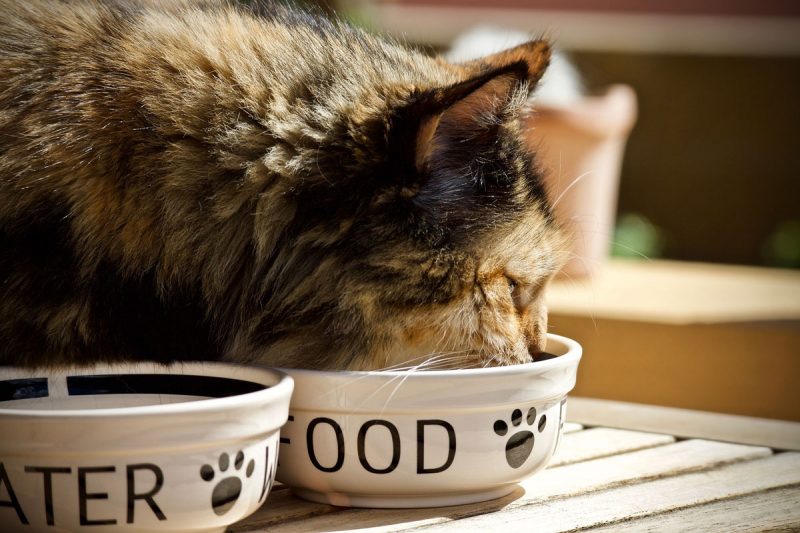
How Often Should I Feed My Diabetic Cat?
It is generally recommended to feed a diabetic cat twice daily, during or before they are given their insulin dose. However, some cats will prefer to graze on food throughout the day and will not take to switching to two meals a day (most cats like to eat micro-meals 10-12 a day). If you’re around to feed small meals more often, this is another option that can often work – as long as your cat is getting the food it needs to maintain proper blood glucose levels, along with the insulin administration, this should be enough to properly control feline diabetes.
Regardless, you need to make sure that you are closely monitoring how much food is being eaten per day. As with everything discussed in this article, you should double-check with your vet that they are comfortable with your feeding method, as the frequency may be affected by your cat’s individual condition. In most cases, your vet will have advised you on this when they gave you the diagnosis, but if not, give them a call. If in doubt, stick to 1-3 meals a day.
Will My Diabetic Cat’s Health Improve with the Correct Diet?
Although a cat with feline diabetes can never be cured, the correct diet could lead to a significant reduction to the dosage of insulin your cat needs. Some diabetic cats could go into remission, but they may still need to have a dose of insulin occasionally to control their diabetes and prevent possible flare-ups. So, although there might be an overall improvement to your cat’s health, diabetes will always be present and so you will need to commit to treating diabetes for the entirety of your cat’s life.
Feeding your diabetic cat the correct food, of low carbohydrate concentration and high protein content, along with their insulin shots, is the key to effectively managing feline diabetes. With close monitoring and care your diabetic cat can live a long, happy and healthy life.
(Always make sure to discuss your cat’s diet with your veterinarian to ensure that you are doing the right thing for your diabetic cat and the blood glucose levels will be controlled effectively.)
Top 5 Dry Foods for Cats with Sensitive Stomachs
- Royal Canin Veterinary Diet Gastrointestinal Fiber Response Dry Cat Food
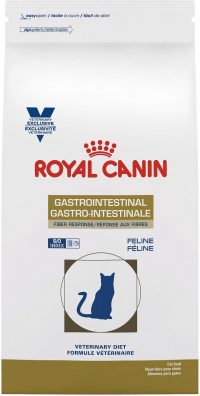
Created especially for felines suffering from digestive issues such as diarrhea, lack of appetite or vomiting, Royal Canin Veterinary Diet Gastrointestinal Fiber Response Dry Food supports healthy digestion. Formulated with a variety of crucial ingredients including soluble and insoluble fibers, and Omega-3 fatty acids (such as fish-derived EPA and DHA). Canin’s blend works to improve your cat’s quality of life by assisting with intestinal movement, in addition to soothing and nourishing the GI tract. This exceptional blend of dietary fiber encourages a normal metabolism, and maintains optimal stool quality.
Key Benefits
- Created for cats living with common GI sensitivities.
- Specially formulated with a blend of soluble and insoluble fiber.
- Provides omega-3 fatty acids, in addition to various types of fiber, to soothe the GI tract.
- Improves the quality of life in cats suffering from diarrhea, lack of appetite or vomiting.

